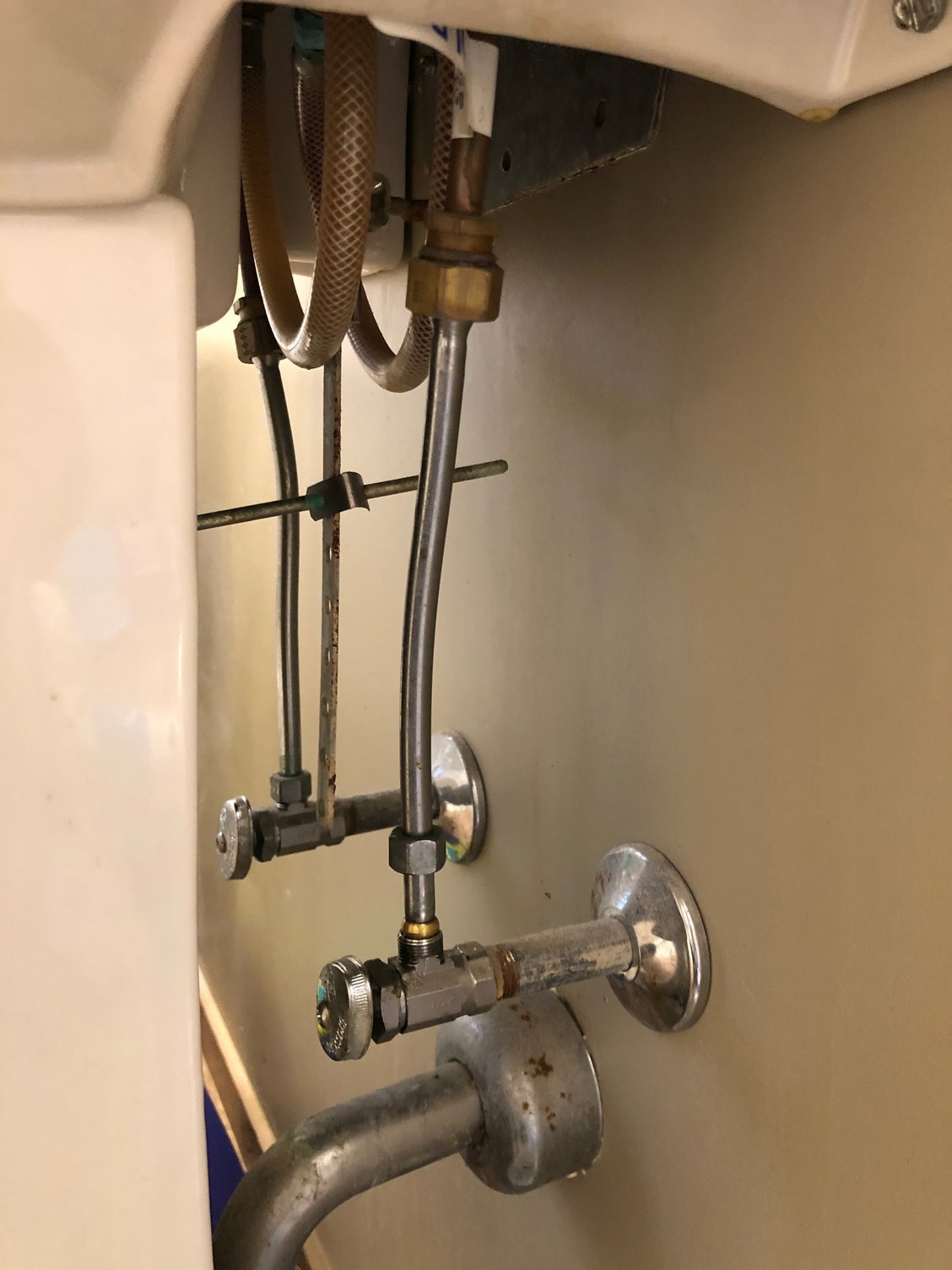Replacing the washers in your bathroom sink faucet may seem like a minor maintenance task, but it is actually crucial for the proper functioning of your faucet. Over time, the washers in your faucet can wear out and cause leaks, leading to wasted water and potentially expensive water bills. By replacing the washers regularly, you can save money and ensure that your faucet continues to work efficiently.1. Understanding the Importance of Replacing Washers in Your Bathroom Sink Faucet
The first step in replacing the washers in your bathroom sink faucet is to assess their condition. You can do this by turning off the water supply and disassembling the faucet. Look at the washers to see if they are cracked, worn, or damaged in any way. If so, it is time to replace them with new ones.2. Assessing the Condition of Your Washers
Before you begin replacing the washers, make sure you have all the necessary tools and materials. These may include a wrench, screwdriver, pliers, and replacement washers. It is also a good idea to have a bucket or towel handy to catch any water that may leak during the process.3. Gathering the Necessary Tools and Materials
Before you start working on your faucet, turn off the water supply to prevent any accidents or flooding. Most faucets have a shut-off valve located under the sink, which you can turn to the off position. If you cannot find a shut-off valve, you may need to turn off the main water supply to your house.4. Turning Off the Water Supply
Using your wrench or pliers, remove the handle of the faucet and the retaining nut that holds the faucet in place. Then, carefully remove the stem and the rubber washer from the faucet. You may need to use a screwdriver to pry off the old washer if it is stuck.5. Disassembling the Faucet
Take your new washers and place them onto the stem of the faucet. Make sure they are the correct size and fit snugly. You may need to use a bit of plumber's grease to help them stay in place. Then, carefully reassemble the faucet, making sure everything is tight and secure.6. Installing the New Washers
Once you have replaced the washers and reassembled the faucet, it is time to turn the water supply back on. Slowly turn the shut-off valve back on and check for any leaks. If there are no leaks, turn the faucet on and off a few times to ensure it is working properly.7. Turning the Water Supply Back On
If you notice any leaks after turning the water supply back on, you may need to tighten the faucet or replace the washers again. It is important to check for leaks before using the faucet regularly to avoid any potential water damage.8. Checking for Leaks
Replacing the washers in your bathroom sink faucet is not a one-time task. It is important to make it a regular part of your home maintenance routine to ensure the long-term efficiency of your faucet. It is recommended to replace the washers every 6-12 months, depending on the frequency of use and the quality of water in your area.9. Regular Maintenance for Long-Term Efficiency
Replacing the washers in your bathroom sink faucet is a simple yet essential maintenance task that can save you money and prevent unnecessary water waste. By following these steps and making it a regular part of your home maintenance routine, you can keep your faucet working efficiently and prevent any potential leaks or damages in the future.10. Conclusion
Why Replacing the Washer in Your Bathroom Sink Faucet is Important for Your House Design

The Importance of Maintaining Your Bathroom Sink Faucet
 When it comes to house design, often times the smallest details can make the biggest impact. Your bathroom sink faucet may seem like a simple fixture, but it plays a crucial role in the overall aesthetic and functionality of your bathroom. That's why it's important to regularly maintain and replace any worn out parts, such as the washer, to ensure your faucet continues to operate properly and enhance the design of your space.
When it comes to house design, often times the smallest details can make the biggest impact. Your bathroom sink faucet may seem like a simple fixture, but it plays a crucial role in the overall aesthetic and functionality of your bathroom. That's why it's important to regularly maintain and replace any worn out parts, such as the washer, to ensure your faucet continues to operate properly and enhance the design of your space.
The Role of the Washer in Your Bathroom Sink Faucet
 The washer in your bathroom sink faucet is a small but mighty component. It is responsible for creating a tight seal between the faucet and the sink, preventing any leaks or drips. Over time, the constant use and exposure to water can cause the washer to wear down and become brittle, leading to leaks and potential water damage. Not only can this impact the functionality of your faucet, but it can also affect the overall design of your bathroom.
The washer in your bathroom sink faucet is a small but mighty component. It is responsible for creating a tight seal between the faucet and the sink, preventing any leaks or drips. Over time, the constant use and exposure to water can cause the washer to wear down and become brittle, leading to leaks and potential water damage. Not only can this impact the functionality of your faucet, but it can also affect the overall design of your bathroom.
Signs That Your Washer Needs to Be Replaced
 If you notice any leaks or drips coming from your bathroom sink faucet, it's a clear indication that your washer needs to be replaced. Other signs to look out for include difficulty turning the faucet on or off, or a loud, squeaky sound when using it. These issues not only disrupt the design of your bathroom but can also waste water and increase your utility bill.
If you notice any leaks or drips coming from your bathroom sink faucet, it's a clear indication that your washer needs to be replaced. Other signs to look out for include difficulty turning the faucet on or off, or a loud, squeaky sound when using it. These issues not only disrupt the design of your bathroom but can also waste water and increase your utility bill.
The Benefits of Replacing Your Washer
 Replacing the washer in your bathroom sink faucet not only improves its functionality but also enhances the design of your bathroom. A new washer will create a tighter seal, preventing any leaks and keeping your faucet looking and performing like new. It can also save you money in the long run by preventing water damage and reducing your water usage.
Replacing the washer in your bathroom sink faucet not only improves its functionality but also enhances the design of your bathroom. A new washer will create a tighter seal, preventing any leaks and keeping your faucet looking and performing like new. It can also save you money in the long run by preventing water damage and reducing your water usage.
How to Replace the Washer in Your Bathroom Sink Faucet
 Replacing the washer in your bathroom sink faucet is a relatively simple process that can be done in a few easy steps. First, turn off the water supply to your faucet. Then, using a wrench, unscrew the faucet handle and remove it. Next, locate the washer inside the faucet and carefully remove it. Replace it with a new washer of the same size and material. Finally, reassemble the faucet and turn the water supply back on.
In conclusion
, maintaining and replacing the washer in your bathroom sink faucet is crucial for both the functionality and design of your house. By regularly checking and replacing worn-out parts, you can ensure your faucet continues to enhance the overall aesthetic of your bathroom. So don't neglect this small but important element in your house design and keep your bathroom looking and functioning at its best.
Replacing the washer in your bathroom sink faucet is a relatively simple process that can be done in a few easy steps. First, turn off the water supply to your faucet. Then, using a wrench, unscrew the faucet handle and remove it. Next, locate the washer inside the faucet and carefully remove it. Replace it with a new washer of the same size and material. Finally, reassemble the faucet and turn the water supply back on.
In conclusion
, maintaining and replacing the washer in your bathroom sink faucet is crucial for both the functionality and design of your house. By regularly checking and replacing worn-out parts, you can ensure your faucet continues to enhance the overall aesthetic of your bathroom. So don't neglect this small but important element in your house design and keep your bathroom looking and functioning at its best.























